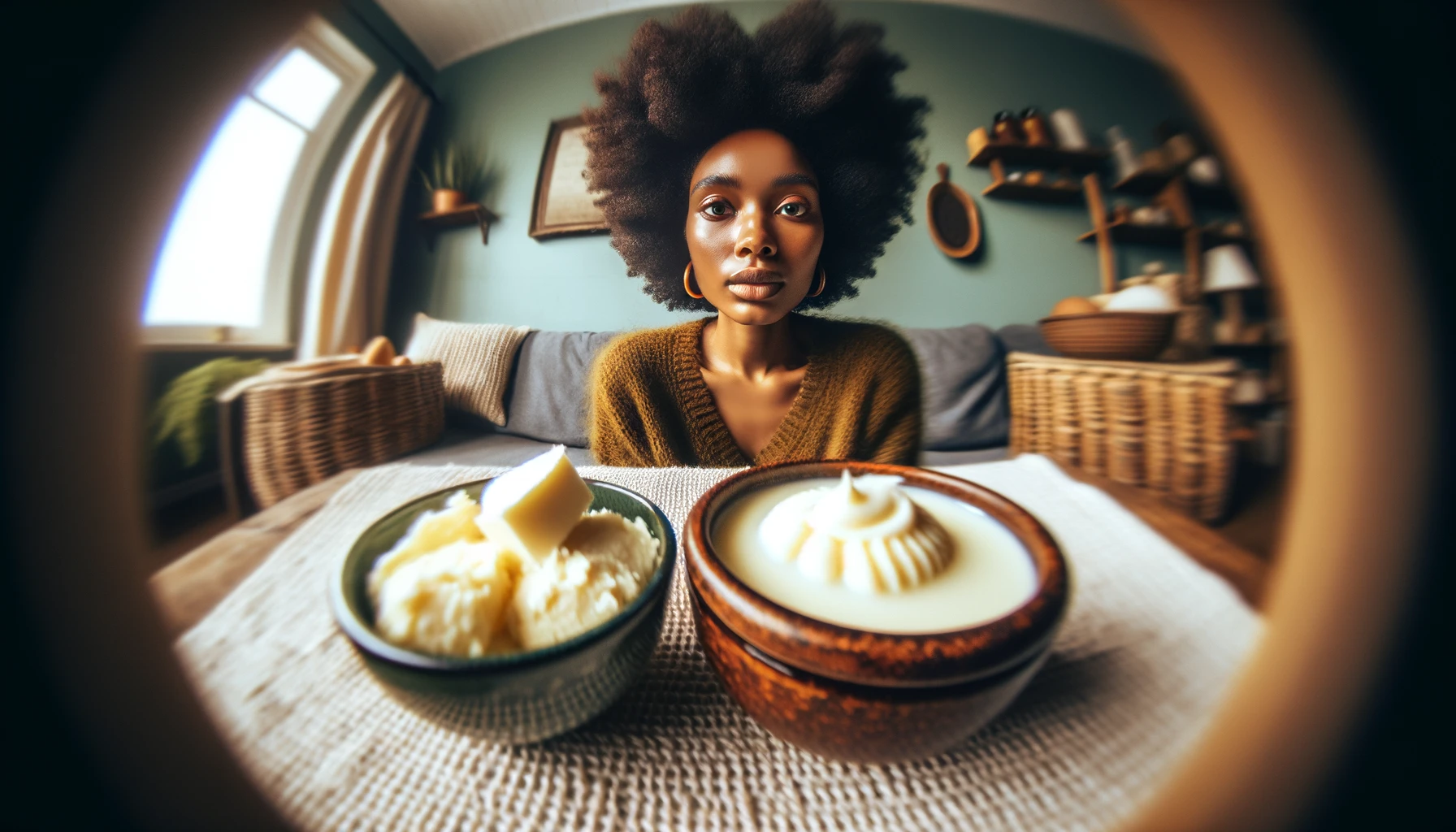by Tara E. l Updated March 16, 2024
Are you on the hunt for some natural TLC for your skin and hair? Well, you might have stumbled upon two exotic buttery wonders: shea butter and cupuacu butter. But hold on, what exactly are they, where do they come from, and how do they differ? Fear not, dear reader! In this article, we’ll dive into the delightful world of these moisturizing marvels and uncover their unique qualities.
Let’s Start with the Basics: Shea Butter and Cupuacu Butter
Picture this: Shea butter and cupuacu butter are like nature’s own creamy treats extracted from the seeds of tropical trees. Shea butter hails from the shea tree, which chills in the savannah regions of West and Central Africa. On the other hand, cupuacu butter comes from the cupuacu tree, which hangs out in the lush rainforest regions of Brazil and Colombia.
These butters have been cherished for centuries by locals for their healing and beautifying powers. Packed with nutrients, antioxidants, and fatty acids, they’re like a feast for your skin and hair. Plus, they’re super versatile, popping up in goodies like lotions, creams, balms, and even shampoos!
Spotting the Differences: Texture and Consistency
Now, here’s where things get interesting. Shea butter and cupuacu butter may seem similar, but they’ve got their own distinct vibes. Shea butter is solid and sturdy at room temperature, while cupuacu butter is softer and smoother. Think of shea butter like a cozy blanket, while cupuacu butter is more like a gentle breeze.
And guess what? This also affects how they feel on your skin and hair. Shea butter brings the heavy-duty hydration, leaving a thick or waxy layer behind. Cupuacu butter, on the other hand, leaves you feeling light and fluffy, with a silky finish. It’s like choosing between a cozy sweater or a flowy dress—depends on your mood!
Scent and Flavor: A Whiff of Nature
Close your eyes and take a sniff: Shea butter gives off a nutty, earthy aroma, while cupuacu butter smells like a sweet, fruity dream. Some folks adore these natural scents, while others might find them a tad strong. But hey, no worries! You can always mix in some other oils or fragrances to create your own signature scent.
And get this: These butters aren’t just for your skin—they’re edible too! Shea butter has a mild, buttery taste, while cupuacu butter brings a hint of chocolatey goodness. Just remember, a little dab’ll do ya—these babies are rich in calories and fat!
Composition and Benefits: The Good Stuff Inside
Here’s where the magic happens. Shea butter boasts moisturizing and anti-inflammatory powers thanks to its oleic and stearic acids. It’s also loaded with vitamins A and E, the superheroes of skin health. Cupuacu butter, on the other hand, is all about soothing and softening with its linoleic and palmitic acids. Plus, it’s got a secret weapon: It can hold onto water like nobody’s business, keeping your skin plump and juicy!
Choosing Your Sidekick: Which Butter is Right for You?
Alright, it’s time to pick your partner in crime! If you’re battling dry, sensitive skin or hair, shea butter might be your best bet. But if you’re dealing with dullness or oiliness, cupuacu butter could be your new BFF. And hey, if you’re up for an adventure, why not mix ’em up and see what happens?
In Conclusion: Butter Up for Beauty
Shea butter and cupuacu butter may be different, but they’re both stars in the world of natural beauty. So go ahead, slather them on, and let your skin and hair soak up the goodness. And hey, don’t forget to share your buttery adventures with us—we’re all ears!
More from Mahogany Speaks To You
- Benefits of Using Murmuru Butter on Your Natural Hair
- Best Skin Exfoliation Products for Your Skin
- Can You Over-exfoliate Your Skin
- Winning Over Winter Skin: Simple Solutions for Dry Skin
